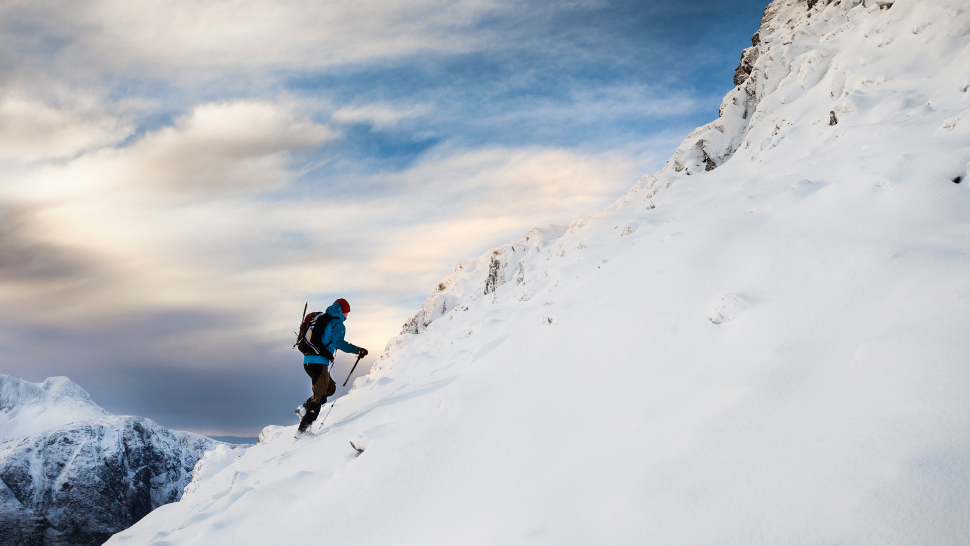
To capture well-exposed images of winter sports such as climbing and skiing
Time: One hour
Skill level: Intermediate
Kit needed: DSLR
Action portraits are always challenging to take, as you’re faced with fast, erratic movement and, often, difficult conditions too. You can get some great video from a GoPro, but even the best action camera on the market can't compete with the image quality you get from a DSLR – but there are some secrets to getting the best possible results.
In winter, the snow can create added complications. You can’t rely on your camera to get the exposure right, as the abundance of white can confuse its metering system. In essence, your camera expects the bulk of the image to be a midtone, and will therefore try to render the snow as grey.
As we’ll explain, the trick is to override your camera’s metering system, to brighten the image up, and ensure the snow looks white, not grey. This has the added advantage of brightening up your subject, so they don’t look almost silhouetted against the snow. We’ll also explain how to gauge how much to brighten your image up, depending on the weather and lighting conditions, and also how to double-check that you’ve exposed the snow and your subject correctly.
For our shoot, we headed up onto the Aonach Eagach ridge in Glencoe, in the Highlands of Scotland, to shoot mountaineer Alex. The fundamental technique, however, will be the same regardless of what winter sport you’re shooting.
For action images, the obvious temptation is to crop in tight on your subject using a long lens, but in very dramatic locations like this, it’s usually a good idea to try to capture the drama of the location, and a sense of your subject making a journey through the landscape. With this in mind, we opted for a 24-85mm kit lens, which enabled us to fit in more of the surrounding landscape.
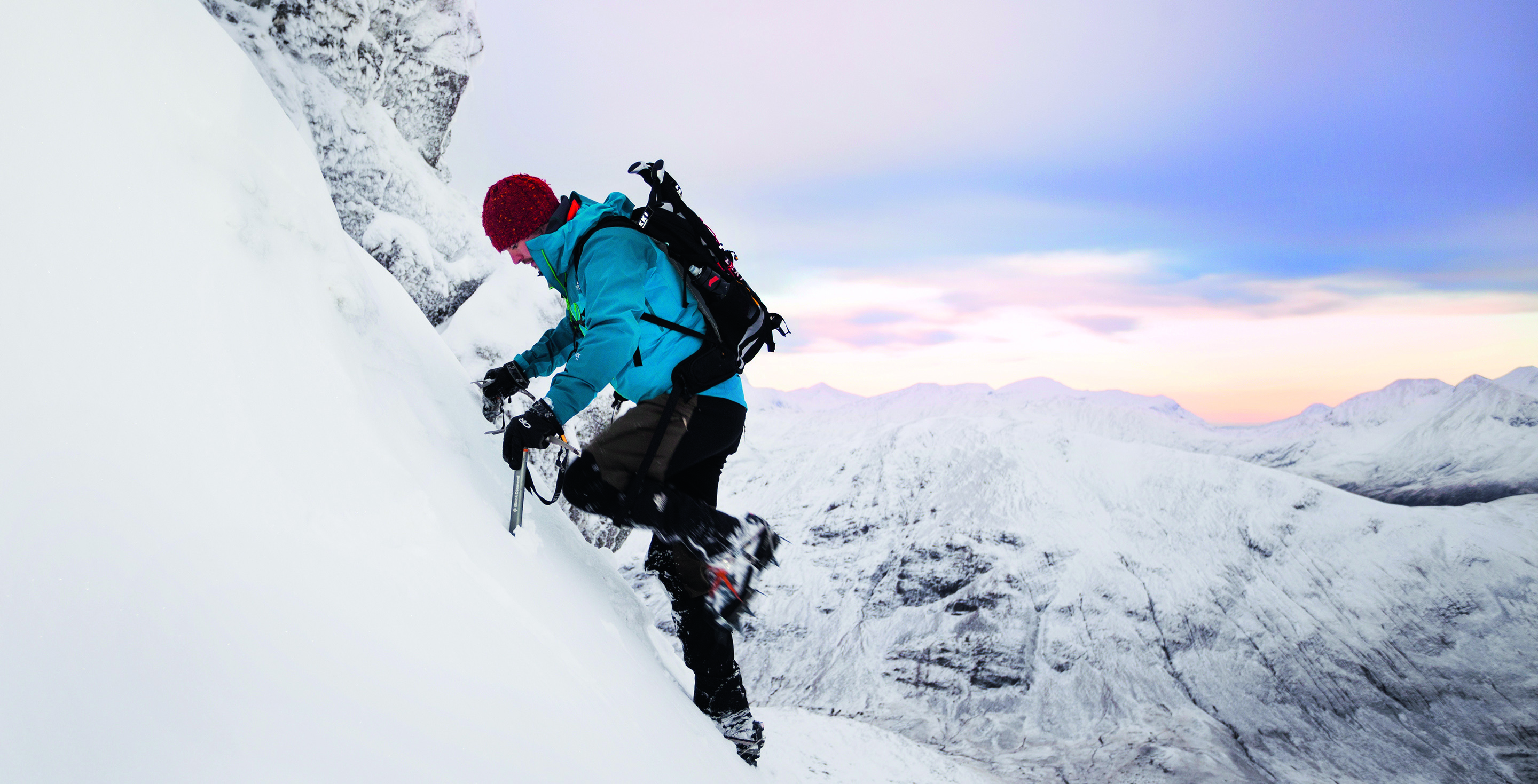
Step-by-step guide: Snow business
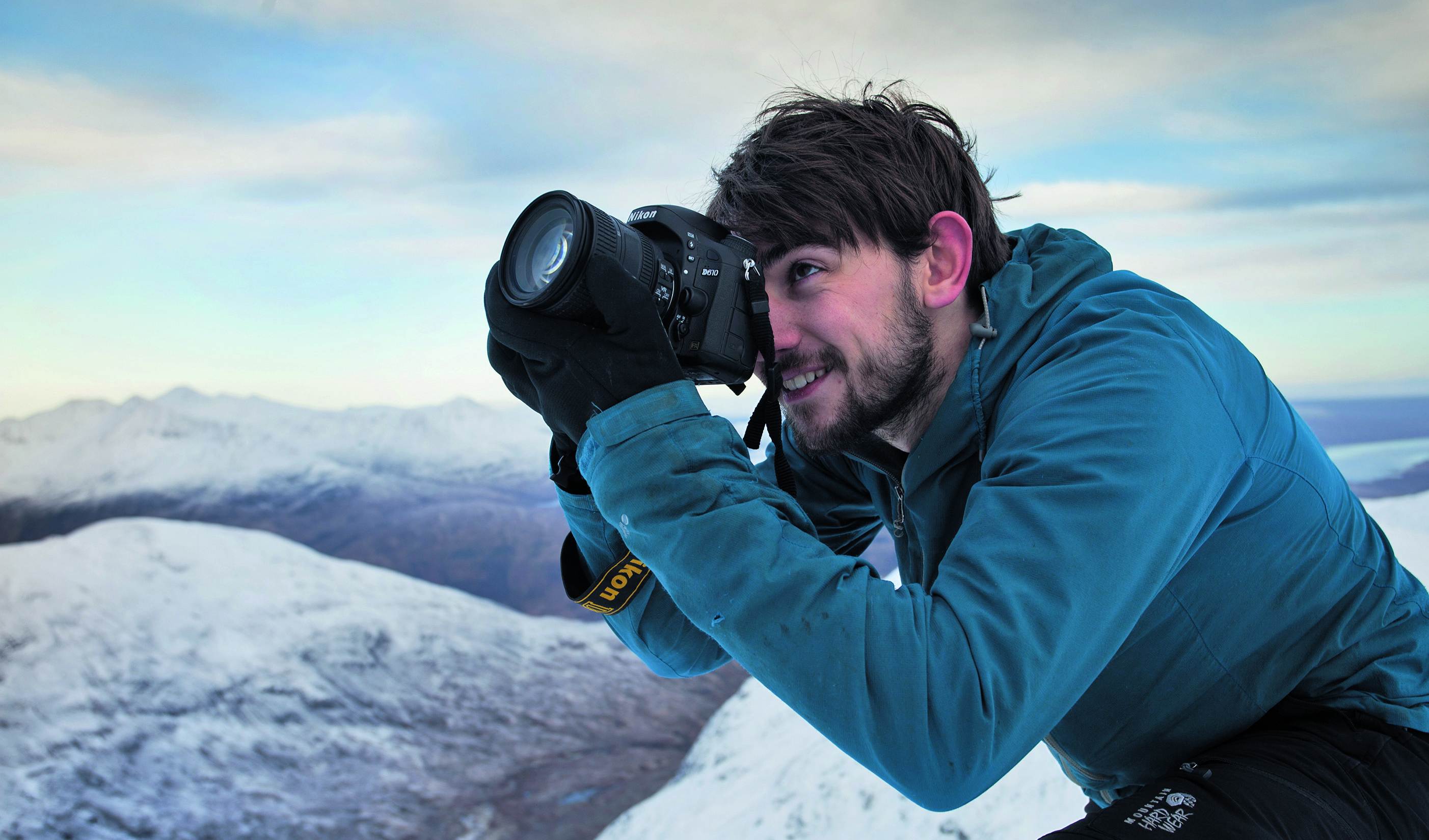
1. Get into position
Whether you’re shooting climbing, skiing or even a snowball fight, you need to find the best backdrop for the action. So, first, explore the location until you find the best vantage point, and then experiment with the angle and focal length until you’re happy with the framing.
• Best gloves for photographers
• Best waterproof jackets for photographers
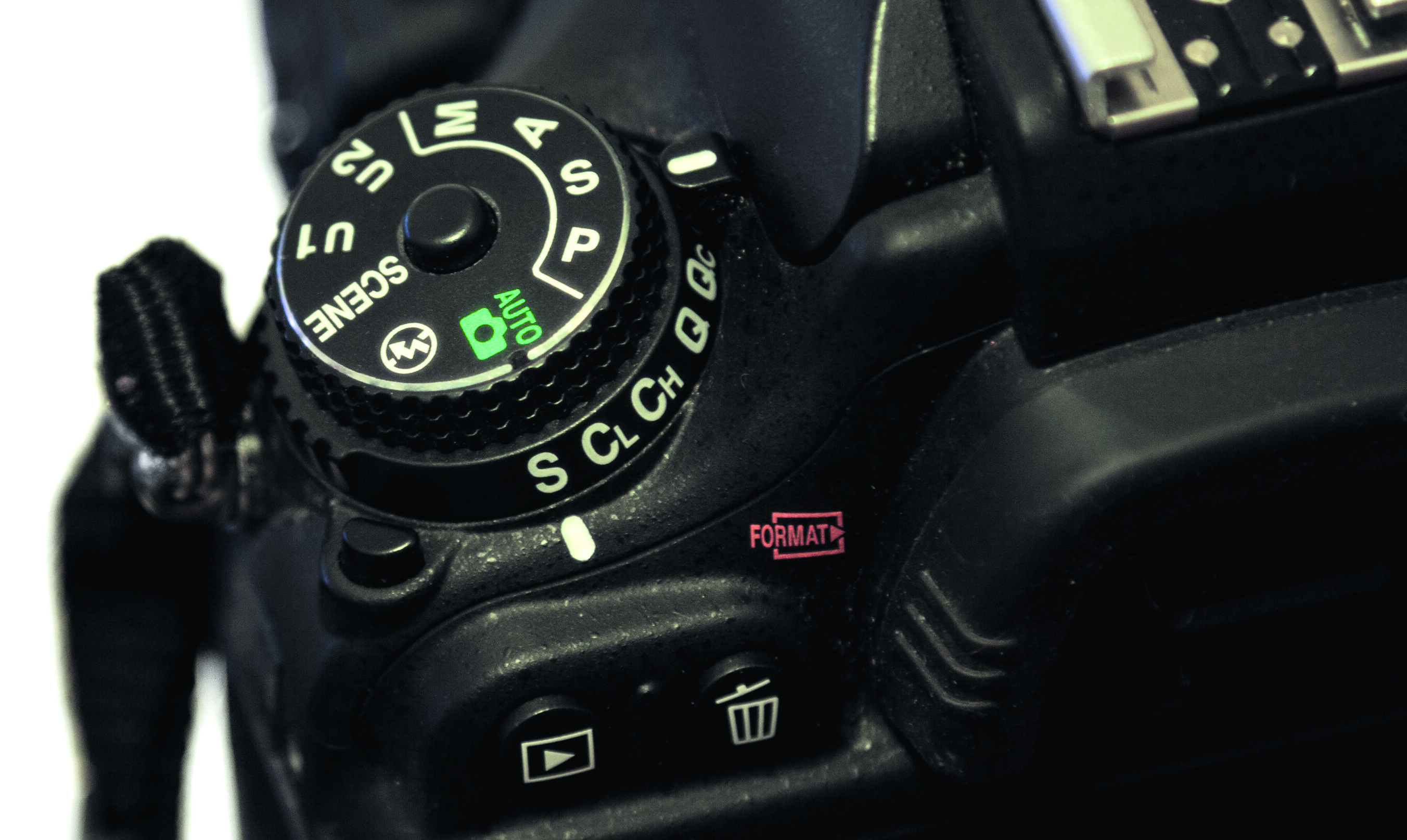
2. Stay sharp
Using the shutter priority mode, make sure your shutter speed is fast enough to capture images of your activity sharply. A shutter speed of 1/160sec should be fast enough for walking and climbing, but you'll need a shutter speed of 1/1000sec or faster for very fast sports like skiing.
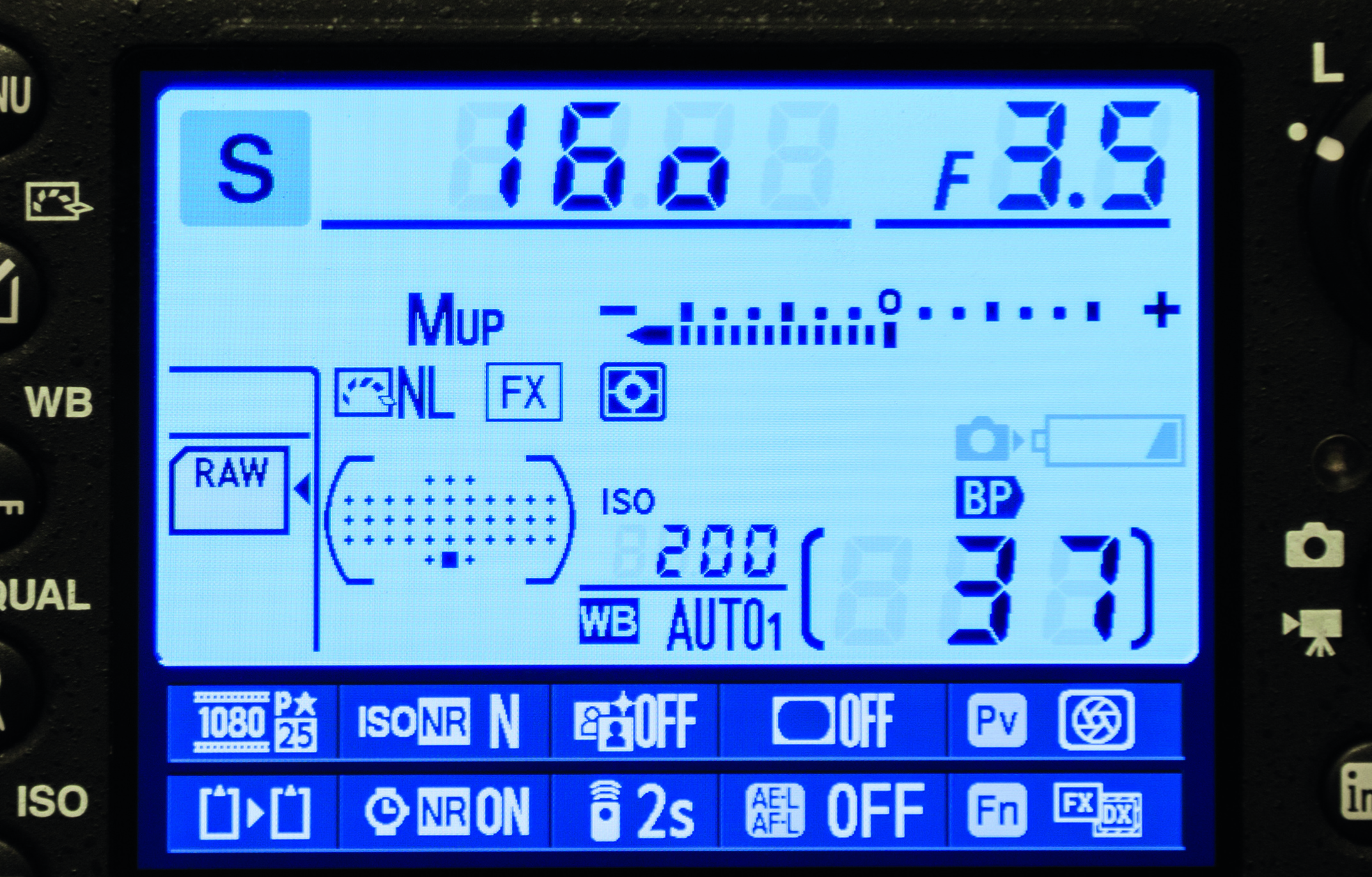
3. Expose for the background
Next, you need to expose for the background. At 1/160sec and ISO 200, our Nikon D610 was suggesting an aperture of f/3.5, although, as mentioned in the introduction, this resulted in an image that was an average midtone. This meant the snow ended up looking grey and Alex was completely under-exposed.
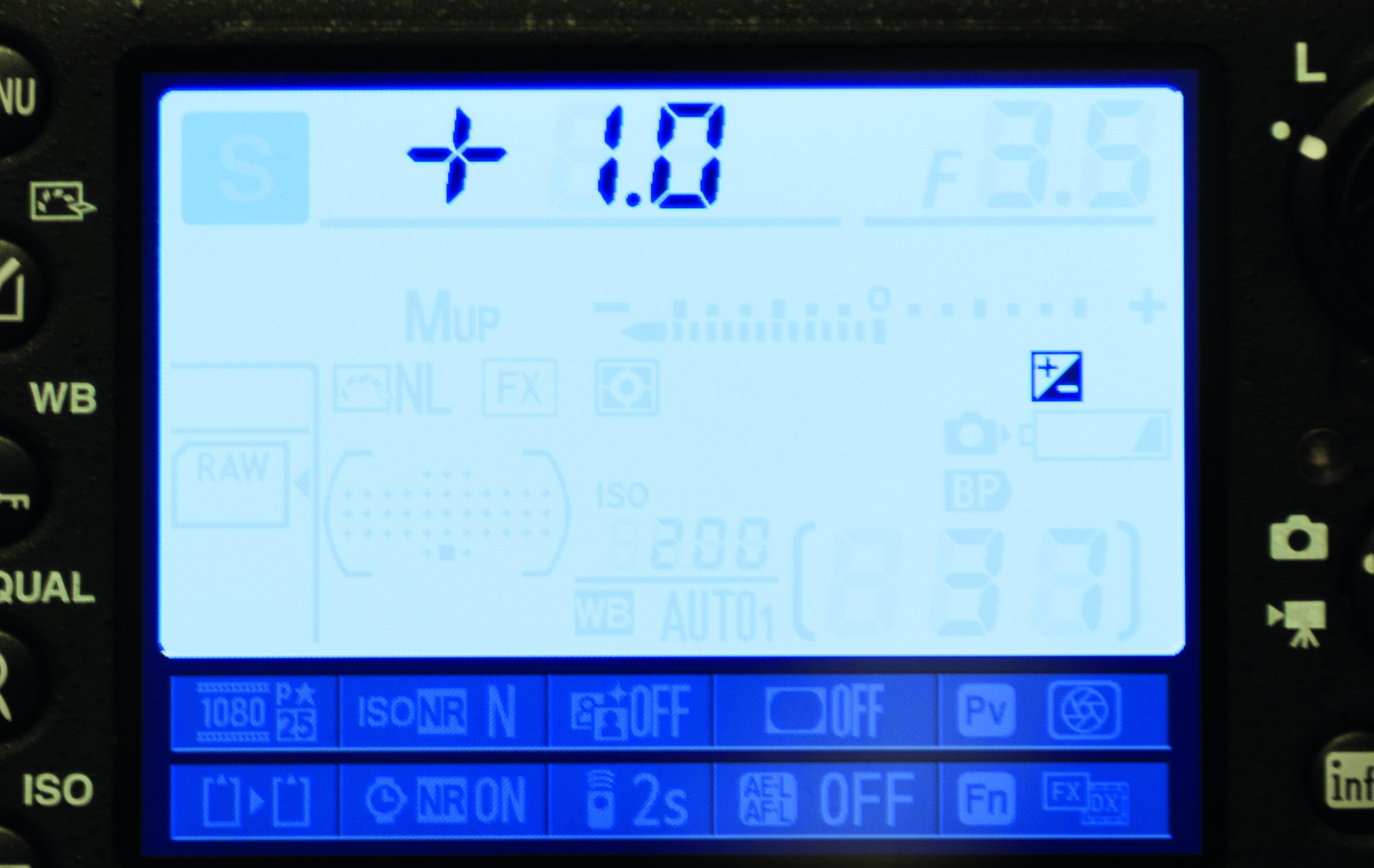
The way round this is to dial in some positive exposure compensation using the +/- button. In very overcast conditions +1EV should be sufficient, but in bright sunlight you might need to go up to +1.5EV to ensure the snow (and your subject) are well exposed.
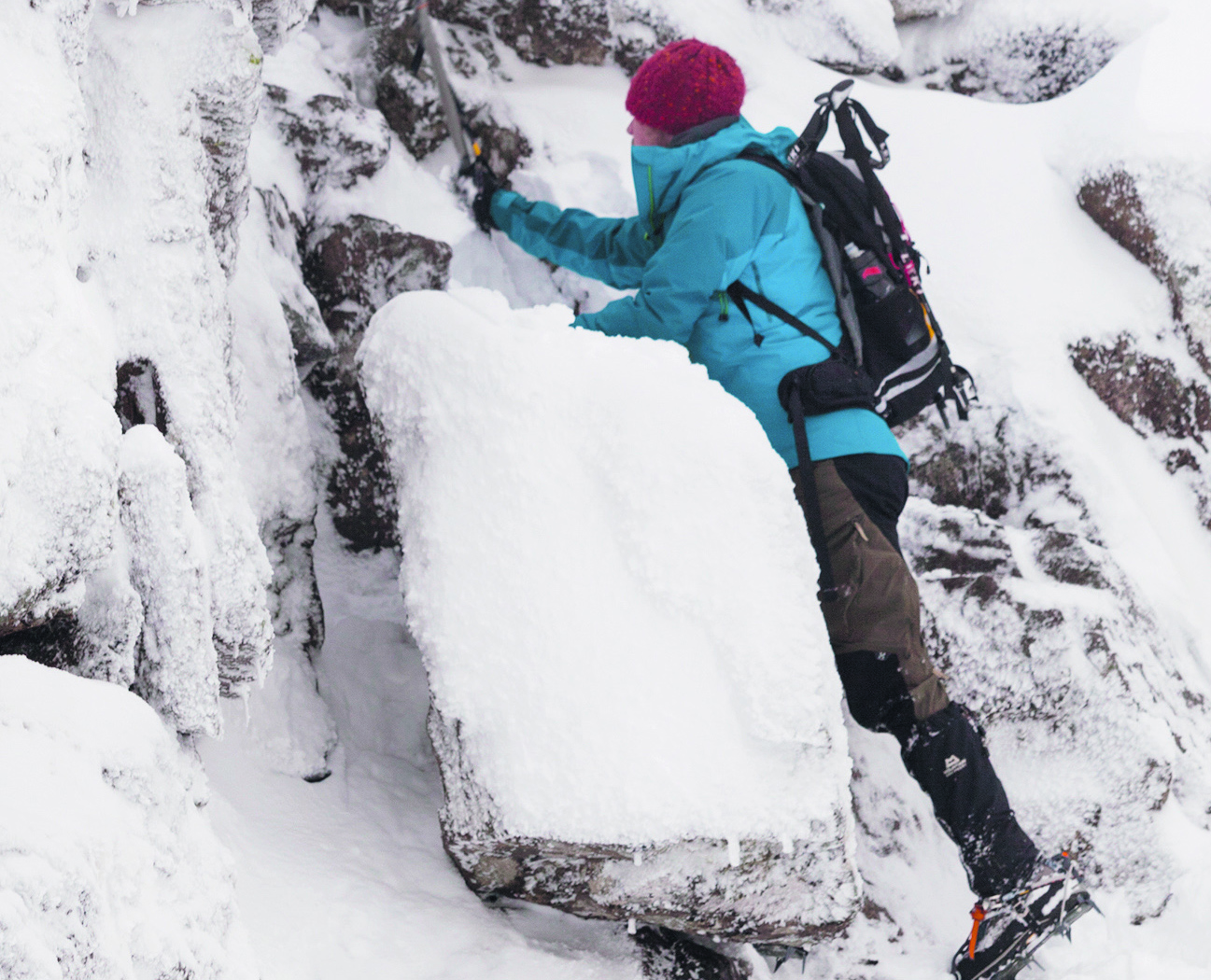
Make sure that your model is wearing bright colours, as this will help them stand out from the background; orange or red are ideal. Very light colours will blend in with the snow, while very dark colours may end rending the subject in silhouette. Most outdoor clothing is very colourful to ensure that you can easily be seen when out in the hills, which, of course, means you’ll be easier to spot in photographs, too.

4. Bump up the ISO
In shutter priority mode, the shutter remains fixed at your chosen value, so when you dial in positive exposure compensation, the camera has to set a wider aperture. If you’re already at your lens’s widest aperture, you’ll need to up the sensitivity to ISO 400 or 800, or set Auto ISO.
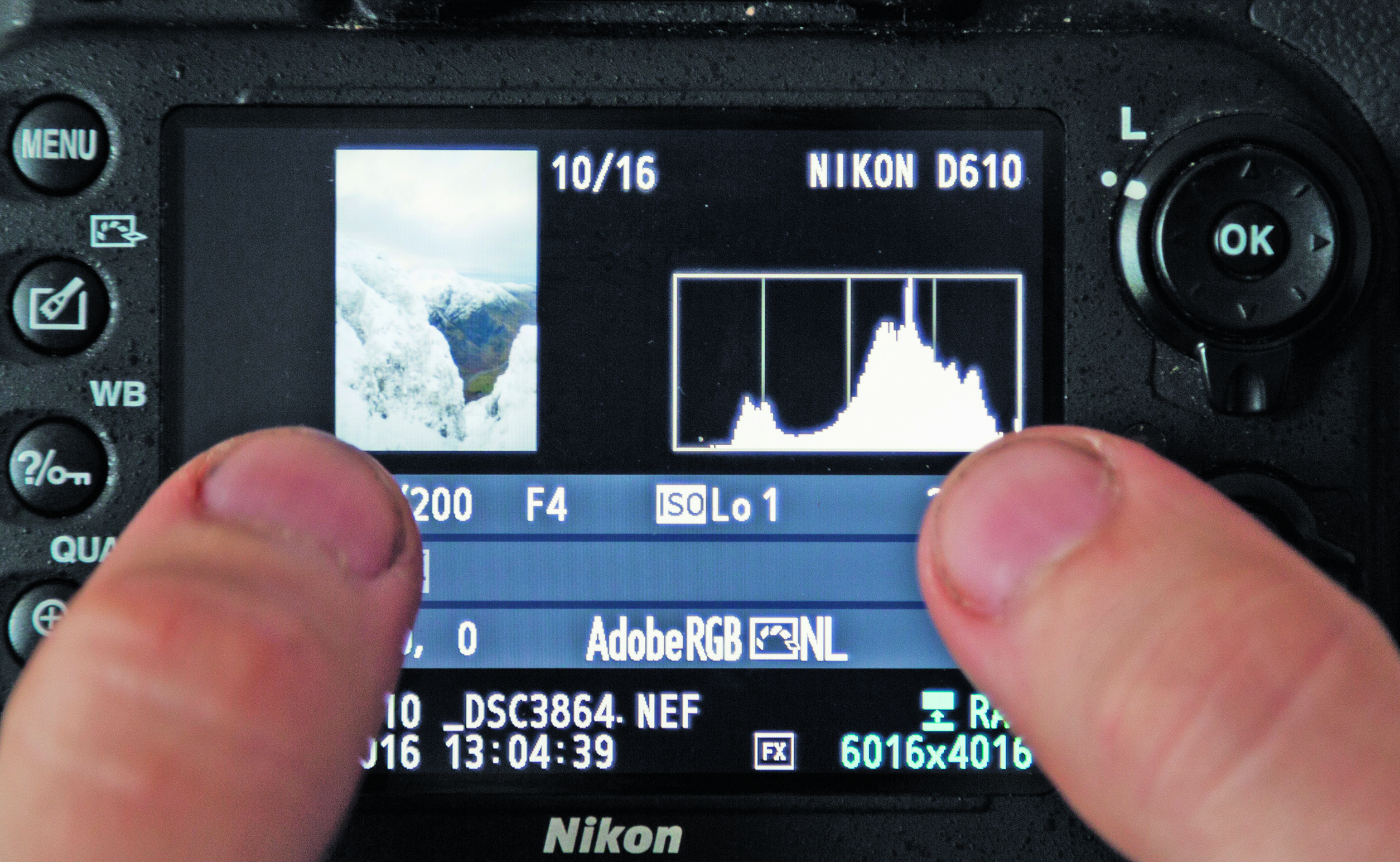
If you set your camera so that it displays highlight when playing back images (which you can usually control in your camera's playback menu), blow-out highlights will flash to let you know you're losing valuable detail.
5. Review your images
Once you’ve taken your shot, it’s a good idea to check the histogram. As the whites are the most common tone in your snowy landscape, you want the bulk of the graph to fall on the right hand side of the histogram, without falling off the edge (as this would indicate detail has been lost).
Read more: Cheat sheet – How to read a histogram
Get the Digital Camera World Newsletter
The best camera deals, reviews, product advice, and unmissable photography news, direct to your inbox!
N-Photo: The Nikon Magazine is a monthly publication that's entirely dedicated to Nikon users. As a 100% independent magazine, you can be assured of unbiased opinion from a trustworthy team of devoted photography experts including editor Adam Waring and Deputy Editor Mike Harris.
Aimed at all users, from camera newcomers to working pros, every issue is packed with practical, Nikon-specific advice for taking better photos, in-depth reviews of Nikon-compatible gear, and inspiring projects and exciting video lessons for mastering camera, lens and Photoshop techniques.
Written by Nikon users for Nikon users, N-Photo is your one-stop shop for everything to do with cameras, lenses, tripods, bags, tips, tricks and techniques to get the most out of your photography.

